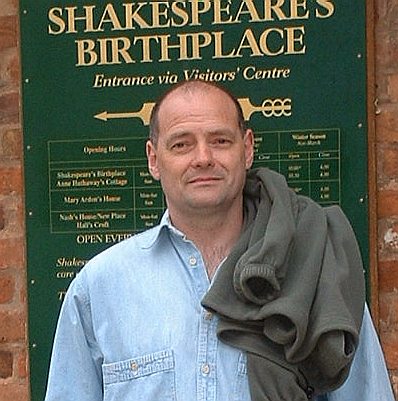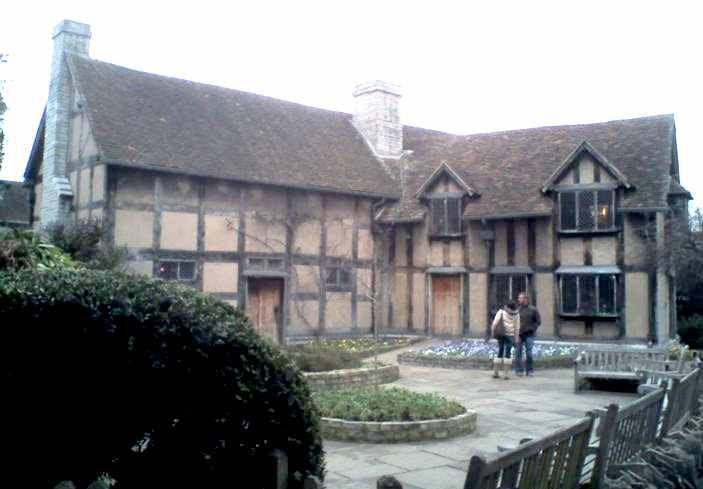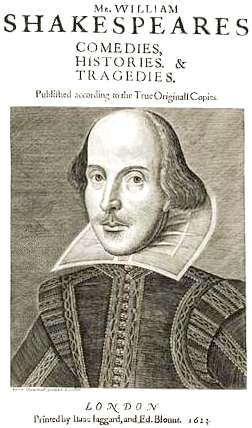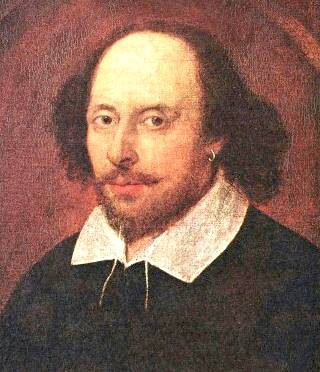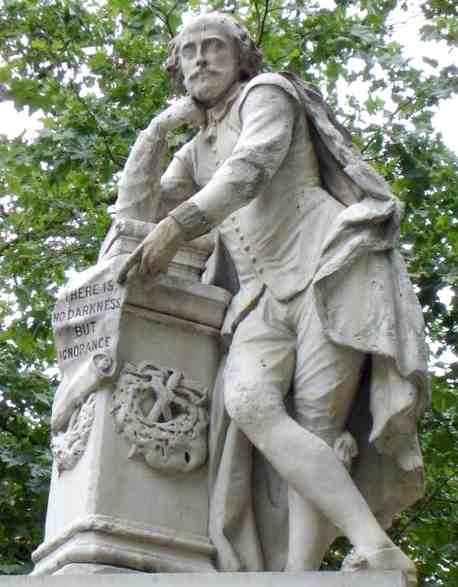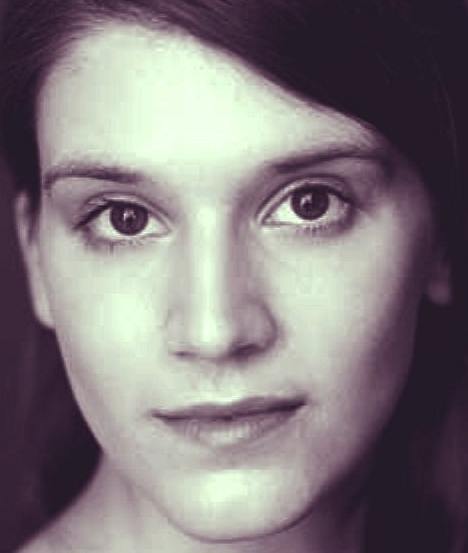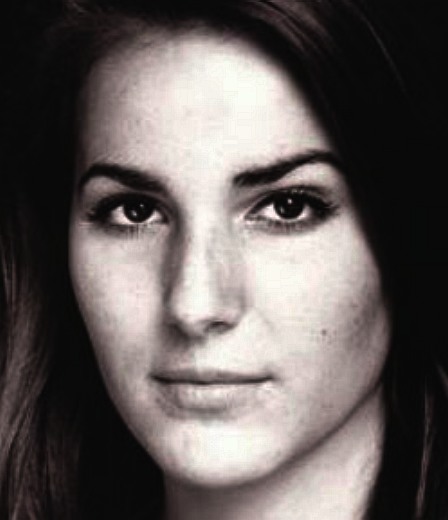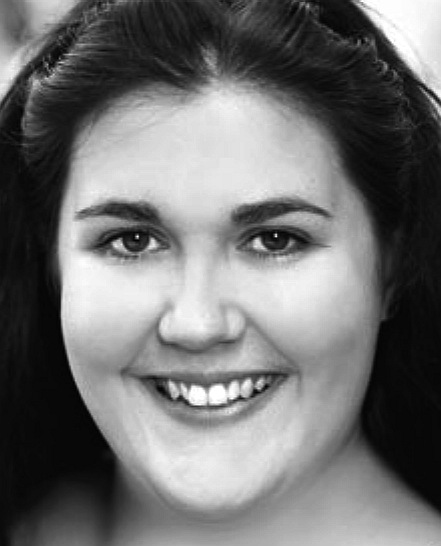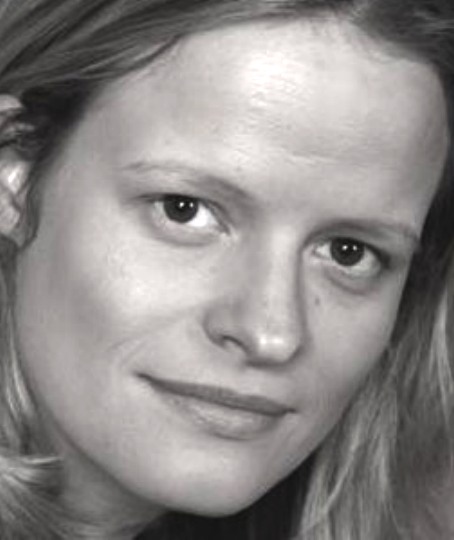|
WILLIAM SHAKESPEARE 1564 - 1616
|
||||||||||||
|
William Shakespeare (baptised April 26, 1564 – died April 23, 1616) was an English poet and playwright widely regarded as the greatest writer of the English language, as well as one of the greatest in Western literature, and the world's preeminent dramatist. He wrote about 38 plays and 154 sonnets, as well as a variety of other poems. Already a popular writer in his own lifetime, Shakespeare's reputation became increasingly celebrated after his death and his work adulated by numerous prominent cultural figures through the centuries. In addition, Shakespeare is the most quoted writer in the literature and history of the English-speaking world. He is often considered to be England's national poet and is sometimes referred to as the "Bard of Avon" (or simply "The Bard") or the "Swan of Avon".
Nelson visits Stratford-Upon-Avon
Shakespeare is believed to have produced most of his work between 1586 and 1616, although the exact dates and chronology of the plays attributed to him are often uncertain. He is counted among the very few playwrights who have excelled in both tragedy and comedy, and his plays combine popular appeal with complex characterisation, poetic grandeur and philosophical depth.
Shakespeare's works have been translated into every major living language, and his plays are continually performed all around the world. In addition, many quotations and neologisms from his plays have passed into everyday usage in English and other languages. Over the years, many people have speculated about Shakespeare's life, raising questions about his sexuality, religious affiliation, and the authorship of his works.
Early life
William Shakespeare (also spelled Shakspere, Shaksper, Shaxper, and Shake-speare, due to the fact that spelling in Elizabethan times was not fixed and absolute) was born in Stratford-upon-Avon in April 1564, the son of John Shakespeare, a successful glover and alderman from Snitterfield, and of Mary Arden, a daughter of the gentry. His birth is assumed to have occurred at the family house on Henley Street. Shakespeare's christening record dates to April 26 of that year. Because christenings were performed within a few days of birth, tradition has settled on April 23 as his birthday. This date provides a convenient symmetry because Shakespeare died on the same day, April 23 (May 3 on the Gregorian calendar), in 1616.
Shakespeare probably attended King Edward VI Grammar School in central Stratford. While the quality of Elizabethan-era grammar schools was uneven, the school probably would have provided an intensive education in Latin grammar and literature. It is presumed that the young Shakespeare attended this school, since as the son of a prominent town official he was entitled to do so for free (although his attendance cannot be confirmed because the school's records have not survived). At the age of 18, he married Anne Hathaway, who was 26, on November 28, 1582. One document identified her as being "of Temple Grafton," near Stratford, and the marriage may have taken place there. Two neighbours of Hathaway posted bond that there were no impediments to the marriage. There appears to have been some haste in arranging the ceremony, presumably because Anne was 3 months pregnant.
After his marriage, Shakespeare left few traces in the historical record until he appeared on the London theatrical scene. Indeed, the late 1580s are known as Shakespeare's "lost years" because no evidence has survived to show exactly where he was or why he left Stratford for London. On May 26, 1583, Shakespeare's first child, Susanna, was baptised at Stratford. Twin children, a son, Hamnet, and a daughter, Judith, were baptised on February 2, 1585. Hamnet died in 1596.
London and theatrical career
By 1592, Shakespeare was a playwright in London; he had enough of a reputation for Robert Greene to denounce him as "an upstart crow, beautified with our feathers, that with his Tygers hart wrapt in a Players hyde, supposes he is as well able to bombast out a blanke verse as the best of you: and being an absolute Johannes factotum, is in his owne conceit the onely Shake-scene in a countrey." (The italicised line parodies the phrase, "Oh, tiger's heart wrapped in a woman's hide" which Shakespeare wrote in Henry VI, part 3.)
By late 1594, Shakespeare was an actor, writer and part-owner of a playing company, known as the Lord Chamberlain's Men — like others of the period, the company took its name from its aristocratic sponsor, in this case the Lord Chamberlain. The group became popular enough that after the death of Elizabeth I and the coronation of James I (1603), the new monarch adopted the company and it became known as the King's Men. Shakespeare's writing shows him to indeed be an actor, with many phrases, words, and references to acting, but there isn't an academic approach to the art of theatre that might be expected.
By 1596, Shakespeare had moved to the parish of St. Helen's, Bishopsgate, and by 1598 he appeared at the top of a list of actors in Every Man in His Humour written by Ben Jhonson. Also by 1598, his name began to appear on the title pages of his plays, presumably as a selling point.
There is a tradition that Shakespeare, in addition to writing many of the plays his company enacted, and being concerned as part-owner of the company with business and financial details, continued to act in various parts, such as the ghost of Hamlet's father, Adam in As You Like It, and the Chorus in Henry V.
He appears to have moved across the Thames River to Southwark sometime around 1599. By 1604, he had moved again, north of the river, where he lodged just north of St Paul's Cathedral with a Huguenot family named Mountjoy. His residence there is worth noting because he helped arrange a marriage between the Mountjoys' daughter and their apprentice Stephen Bellott. Bellott later sued his father-in-law for defaulting on part of the promised dowry, and Shakespeare was called as a witness.
Various documents recording legal affairs and commercial transactions show that Shakespeare grew rich enough during his stay in London to buy a property in Blackfriars, London and own the second-largest house in Stratford, New Place.
Shakespeare's House in Stratford-Upon-Avon Now home of the Shakespeare's Birthplace Trust
Later years
Shakespeare's last two plays were written in 1613, after which he appears to have retired to Stratford. He died on April 23, 1616, at the age of 52, on the same date (though not same day for England was still functioning under the Julian calendar) as Spanish writer and poet Miguel de Cervantes. He also died on his birthday, if the tradition that he was born on April 23 is correct. He was married to Hathaway until his death and was survived by his two daughters, Susanna and Judith. Susanna married Dr John Hall, but there are no direct descendants of the poet and playwright alive today.
Shakespeare is buried in the chancel of Holy Trinity Church in Stratford-upon-Avon. He was granted the honour of burial in the chancel not on account of his fame as a playwright but for purchasing a share of the tithe of the church for £440 (a considerable sum of money at the time). A monument placed by his family on the wall nearest his grave features a bust of him posed in the act of writing. Each year on his claimed birthday, a new quill pen is placed in the writing hand of the bust.
He is believed to have written the epitaph on his tombstone:
WORKS
Plays
A number of Shakespeare's plays are widely regarded as among the greatest in the English language and in Western literature. He wrote tragedies, histories, comedies and romances, which have been translated into every major living language, in addition to being continually performed around the world.
As was normal in the period, Shakespeare based many of his plays on the work of other playwrights and reworked earlier stories and historical material. For example, Hamlet (c. 1601) is probably a reworking of an older, lost play (the so-called Ur-Hamlet), and King Lear is an adaptation of an earlier play, also called King Lear. For plays on historical subjects, Shakespeare relied heavily on two principal texts. Most of the Roman and Greek plays are based on Plutarch's Parallel Lives (from the 1579 English translation by Sir Thomas North), and the English history plays are indebted to Raphael Holinshed's 1587 Chronicles.
Shakespeare's plays tend to be placed into three main stylistic groups:
The earlier plays range from broad comedy to historical nostalgia, while the middle-period plays tend to be grander in terms of theme, addressing such issues as betrayal, murder, lust, power, and ambition. By contrast, his late romances feature redemptive plotlines with ambiguous endings and the use of magic and other fantastical elements. However, the borders between these genres are never clear.
Image of Shakespeare from the First Folio (1623) the first collected edition of his plays
Some of Shakespeare's plays first appeared in print as a series of quartos, but most remained unpublished until 1623 when the posthumous First Folio was published by two actors who had been in Shakespeare's company: John Heminges and Henry Condell. The traditional division of his plays into tragedies, comedies, and histories follows the logic of the First Folio. It is at this point that stage directions, punctuation and act divisions enter his plays, setting the trend for further future editorial decisions. Modern criticism has also labelled some of his plays "problem plays" or tragi-comedies, as they elude easy categorisation, or perhaps purposefully break generic conventions. The term "romances" has also been preferred for the later comedies.
There are many controversies about the exact chronology of Shakespeare's plays. In addition, the fact that Shakespeare did not produce an authoritative print version of his plays during his life accounts for part of the textual problem often noted with his plays, which means that for several of the plays there are different textual versions. As a result, the problem of identifying what Shakespeare actually wrote became a major concern for most modern editions. Textual corruptions also stem from printers' errors, compositors' misreadings, or wrongly scanned lines from the source material. Additionally, in an age before standardised spelling, Shakespeare often wrote a word several times in a different spelling, contributing further to the transcribers' confusions. Modern scholars also believe Shakespeare revised his plays throughout the years, sometimes leading to two existing versions of one play.
Sonnets
Shakespeare's sonnets are a collection of 154 poems that deal with such themes as love, beauty, and mortality. All but two first appeared in the 1609 publication entitled Shakespeare's Sonnets; numbers 138 ("When my love swears that she is made of truth") and 144 ("Two loves have I, of comfort and despair") had previously been published in a 1599 miscellany entitled The Passionate Pilgrim. The Sonnets were written over a number of years, probably beginning in the early 1590s.
Style
Shakespeare's works have been a major influence on subsequent theatre. Not only did Shakespeare create some of the most admired plays in Western literature, he also transformed English theatre by expanding expectations about what could be accomplished through characterisation, plot, action, language, and genre. His poetic artistry helped raise the status of popular theatre, permitting it to be admired by intellectuals as well as by those seeking pure entertainment.
Theatre was changing when Shakespeare first arrived in London in the late 1580s or early 1590s. Previously, the most common forms of popular English theatre were the Tudor morality plays. These plays, which blend piety with farce and slapstick, were allegories in which the characters are personified moral attributes who validate the virtues of Godly life by prompting the protagonist to choose such a life over evil. The characters and plot situations are symbolic rather than realistic. As a child, Shakespeare would likely have been exposed to this type of play (along with mystery plays and miracle plays). Meanwhile, at the universities, academic plays were being staged based on Roman closet dramas. These plays, often performed in Latin, used a more exact and academically respectable poetic style than the morality plays, but they were also more static, valuing lengthy speeches over physical action.
By the late 16th century, the popularity of morality and academic plays waned as the English Renaissance took hold, and playwrights like Thomas Kyd and Christopher Marlowe began to revolutionise theatre. Their plays blended the old morality drama with academic theatre to produce a new secular form. The new drama had the poetic grandeur and philosophical depth of the academic play and the bawdy populism of the moralities. However, it was more ambiguous and complex in its meanings, and less concerned with simple moral allegories. Inspired by this new style, Shakespeare took these changes to a new level, creating plays that not only resonated on an emotional level with audiences but also explored and debated the basic elements of what it means to be human.
Portrait of William Shakespeare
Reputation
Shakespeare's reputation has grown considerably since his own time. During his lifetime and shortly after his death, Shakespeare was well-regarded but not considered the supreme poet of his age. He was included in some contemporary lists of leading poets, but he lacked the stature of Edmund Spenser or Philip Sidney. After the Interregnum stage ban of 1642–1660, the new Restoration theatre companies had the previous generation of playwrights as the mainstay of their repertory, most of all the phenomenally popular Beaumont and Fletcher team, but also Ben Jonson and Shakespeare. As with other older playwrights, Shakespeare's plays were mercilessly adapted by later dramatists for the Restoration stage with little of the reverence that would later develop.
Beginning in the late 17th century, Shakespeare began to be considered the supreme English-language playwright (and, to a lesser extent, poet). Initially this reputation focused on Shakespeare as a dramatic poet, to be studied on the printed page rather than in the theatre. By the early 19th century, though, Shakespeare began hitting peaks of fame and popularity. During this time, theatrical productions of Shakespeare provided spectacle and melodrama for the masses and were extremely popular. Romantic critics such as Samuel Taylor Coleridge then raised admiration for Shakespeare to adulation or bardolatry (from bard + idolatry), in line with the Romantic reverence for the poet as prophet and genius. In the middle to late 19th century, Shakespeare also became an emblem of English pride and a "rallying-sign", as Thomas Carlyle wrote in 1841, for the whole British Empire.
This reverence has provoked a negative reaction. In the 21st century most inhabitants of the English-speaking world encounter Shakespeare at school at a young age, and there is an association by some students of his work with boredom and incomprehension and of "high art" not easily appreciated by popular culture, an ironic fate considering the social mix of Shakespeare's audience. At the same time, Shakespeare's plays remain more frequently staged than the works of any other playwright and are frequently adapted into film—including Hollywood movies specifically marketed to broad teenage audiences, though many simply take credit for his plots rather than his narrative. Famously, Shakespeare's plays are often transferred to a different environment even when retaining his dialogue.
On another level, many modern English words and phrases that are taken for granted were invented by Shakespeare.
Speculations about Shakespeare
Identity
Over the years such figures as Delia Bacon, Ignatius Donnelly and Mark Twain have expressed disbelief that the man from Stratford-upon-Avon actually produced the works attributed to him. Some of these claims necessarily rely on conspiracy theories to explain the lack of direct historical evidence for them, although their advocates also point to evidentiary gaps in the orthodox history. Most professional scholars consider the argument baseless, and attribute the debate to the scarcity and ambiguity of many of the historical records of Shakespeare's life.
Edward de Vere, the 17th Earl of Oxford, an English nobleman and intimate of Queen Elizabeth, became the most prominent alternative candidate for authorship of the Shakespeare canon, after having been identified in the 1920s. Oxford partisans note the similarities between the Earl's life, and events and sentiments depicted in the plays and sonnets. The principal hurdle for the Oxfordian theory is the evidence that many of the Shakespeare plays were written after their candidate's death, but well within the lifespan of William Shakespeare. Christopher Marlowe is considered by some to be the most highly qualified to have written the works of Shakespeare. It has been speculated that Marlowe's recorded death in 1593 was faked for various reasons and that Marlowe went into hiding, subsequently writing under the name of William Shakespeare; this is called the Marlovian theory. Sir Francis Bacon is another proposed author for the Shakespeare works. Besides having travelled to some of the countries in which the plays are set, he could also have read the Shakespeare sources in their original Greek, Italian, Hebrew, or French. He described himself as a "Concealed Poet" and was alive at the time of the publication of the First Folio in 1623. Arguments against Bacon include the suggestion that he had no time to write so many plays, and that his style is different from Shakespeare's.
A question in mainstream academia addresses whether Shakespeare himself wrote every word of his commonly accepted plays, given that collaboration between dramatists routinely occurred in the Elizabethan theatre. Serious academic work continues to attempt to ascertain the authorship of plays and poems of the time, both those attributed to Shakespeare and others.
Sexuality
Homoerotic allusions in a number of his works have led commentators to contemplate Shakespeare's possible bisexuality. While 26 of the Sonnets are love poems addressed to a married woman (the "Dark Lady"), 126 are addressed to a young man (known as the "Fair Lord"). The amorous tone of the latter group, which focuses on the young man's beauty and the writer's devotion, has all along been interpreted as suggestive evidence for Shakespeare's being bisexual. For example, in 1954, C.S. Lewis wrote that the sonnets are "too lover-like for ordinary male friendship" (although he added that they are not the poetry of "full-blown pederasty") and that he "found no real parallel to such language between friends in the sixteenth-century literature." Nonetheless, others interpret them as referring to intense friendship rather than sexual love.
Religion
In 1559, five years before Shakespeare's birth, the Elizabethan Religious Settlement finally severed the Church of England from the Roman Catholic Church after decades of uncertainty. In the ensuing years, extreme pressure was placed on England's Catholics to convert to the Protestant Church of England, and recusancy laws made Catholicism illegal. Some historians maintain that in Shakespeare's lifetime there was a substantial and widespread quiet resistance to the newly imposed faith. Some scholars, using both historical and literary evidence, have argued that Shakespeare was one of these recusants, but this cannot be proven absolutely.
There is evidence that members of Shakespeare's family were recusant Catholics. The strongest evidence is a tract professing secret Catholicism signed by John Shakespeare, father of the poet. The tract was found in the rafters of Shakespeare's birthplace in the 18th century, and was seen and described by the reputable scholar Edmond Malone. However, the tract has since been lost, and its authenticity cannot therefore be proven. John Shakespeare was also listed as one who did not attend church services, but this was "for feare of processe for Debtte", according to the commissioners, not because he was a recusant. Then again, avoiding creditors may have merely been a convenient pretext for a recusant's avoidance of the established church's services.
Shakespeare's mother, Mary Arden, was a member of a conspicuous and determinedly Catholic family in Warwickshire. In 1606, William's daughter Susanna was listed as one of the residents of Stratford refusing to take Holy Communion, which may suggest Catholic sympathies. Archdeacon Richard Davies, an 18th century Anglican cleric, allegedly wrote of Shakespeare: "He dyed a Papyst". Four of the six schoolmasters at the grammar school during Shakespeare's youth were Catholic sympathisers, and Simon Hunt, likely one of Shakespeare’s teachers, later became a Jesuit.
While none of this evidence proves Shakespeare's own Catholic sympathies, one historian, Clare Asquith, has claimed that those sympathies are detectable in his writing. Asquith claims that Shakespeare uses terms such as "high" when referring to Catholic characters and "low" when referring to Protestants (the terms refer to their altars) and "light" or "fair" to refer to Catholic and "dark" to refer to Protestant, a reference to certain clerical garbs. Asquith also detects in Shakespeare's work the use of a simple code used by the Jesuit underground in England which took the form of a mercantile terminology wherein priests were 'merchants' and souls were 'jewels', the people pursuing them were 'creditors', and the Tyburn gallows where the members of the underground died was called 'the place of much trading'. The Jesuit underground used this code so their correspondences looked like innocuous commercial letters, and Asquith claims that Shakespeare also used this code.
Needless to say, Shakespeare’s Catholicism is by no means universally accepted. The Catholic Encyclopedia questions not only his Catholicism, but whether "Shakespeare was not infected with the atheism, which... was rampant in the more cultured society of the Elizabethan age." Stephen Greenblatt, of Harvard, suspects Catholic sympathies of some kind or another in Shakespeare and his family but considers the writer to be a less than pious person with essentially worldly motives. An increasing number of scholars do look to matters biographical and evidence from Shakespeare’s work such as the placement of young Hamlet as a student at Wittenberg while old Hamlet’s ghost is in purgatory, the sympathetic view of religious life ("thrice blessed"), scholastic theology in "The Phoenix and the Turtle", and sympathetic allusions to martyred English Jesuit St. Edmund Campion in Twelfth Night and many other matters as suggestive of a Catholic worldview. However, these may have been continuations of old literary conventions rather than determined Catholicism just as the Robin Hood ballads continued to have friars in them after the Reformation.
On the other hand, the Porter's speech in Macbeth has been read by some as a criticism of the equivocation of Father Henry Garnet after it became topical in 1606 due to his execution.
Statue of Shakespeare in Leicester Square, London
Bibliography
Shakespeare's plays are traditionally organised into three groups: Tragedies, Comedies, and Histories. The following list separates the plays according to their classification in the First Folio, the first published edition of Shakespeare's plays. Today, some of the comedies are usually considered as a separate subgenre, the 'romances' or tragicomedies; these plays are highlighted with an asterisk (*).
SHAKESPEARIAN SMOOTH FACES - THE PLAYERS (in alphabetical order)
LINKS and REFERENCE
Shakespeare died on May 3. Encyclopedia Britannica article on Shakespeare, MSN Encarta Encyclopedia article on Shakespeare, Columbia Electronic Encyclopedia article on Shakespeare Wikiquote information on Shakespeare The Literary Encyclopedia entry on William Shakespeare The Columbia Dictionary of Shakespeare Quotations The Making of the National Poet: Shakespeare, Adaptation and Authorship, 1660-1769 Webster's Dictionary entry on The Bard To The Memory Of My Beloved, The Author, Mr William Shakespeare, And What He Hath Left Us The Spelling and Pronunciation of Shakespeare's Name by David Kathman Was Shakespeare gay? Sonnet 20 and the politics of pedagogy. Allusions to Edmund Campion in Twelfth Night http://www.eastdonsc.vic.edu.au/home/pgardner/teaching/Macbeth_notes.html Shakespeare on Film Bibliography (via UC Berkeley) William Shakespeare's 10 most popular plays Selected Poetry by Shakespeare, including all sonnets at Inspired Poetry British Library; Original 93 copies in quarto Works by William Shakespeare at Project Gutenberg Touchstone - UK Shakespeare collections Shakespeare's plays in .txt format Canadian Adaptations of Shakespeare Project at University of Guelph Full text of plays doubtfully attributed to Shakespeare Book and play titles which are Shakespearean quotations National Geographic article about Shakespeare's coinages William Shakespeare Search Engine
Ashlea Kaye in William Shakespeare's Romeo and Juliet
ANTONY
AND CLEOPATRA - ACT
I SCENE
III. The same. Another
room. Enter CLEOPATRA, CHARMIAN, IRAS, and ALEXAS
ACT II
SCENE III. The same. OCTAVIUS CAESAR's house. Enter MARK ANTONY, CAESAR, OCTAVIA between them, and Attendants SCENE
IV. Lepidus sets off to do battle with Pompey.
Urging Maecenas and Agrippa hasten departures of Antony and Caesar. SCENE VI. Near Misenum. Enter Pompey, Menas drum/trumpet Caesar, Antony, Lepidus, Enobarbus, Mecaenas, Soldiers SCENE
VII. On board POMPEY's galley, off
Misenum. Music plays.
Enter two or three Servants with a banquet
SCENE VI. Rome. OCTAVIUS CAESAR's house. Enter OCTAVIUS CAESAR, AGRIPPA, and MECAENAS SCENE
VII. Near Actium. MARK ANTONY's camp. Enter CLEOPATRA and DOMITIUS
ENOBARBUS SCENE IX. Another part of the plain. Enter MARK ANTONY and DOMITIUS ENOBARBUS SCENE X. Another part of the plain. CANIDIUS marcheth; and TAURUS, lieutenant CAESAR, heard the noise of a sea-fight SCENE XI. Alexandria. CLEOPATRA's palace. Enter MARK ANTONY with Attendants SCENE
XII. Egypt. OCTAVIUS CAESAR's camp.
Enter OCTAVIUS CAESAR, DOLABELLA,
THYREUS, with others
SCENE III. The same. Before the palace. Enter two Soldiers to their guard SCENE IV. The same. A room in the palace. Enter MARK ANTONY and CLEOPATRA, CHARMIAN, and others attending SCENE
V. Alexandria. MARK ANTONY's camp.
Trumpets sound. Enter MARK
ANTONY and EROS; a Soldier meeting them SCENE VII. Field of battle between the camps. Alarum. Drums and trumpets. Enter AGRIPPA and others SCENE
VIII. Under the walls of Alexandria.
Alarum. Enter MARK ANTONY, in
a march; SCARUS, with others SCENE XI. Another part of the same. Enter OCTAVIUS CAESAR, and his Army SCENE
XII. Another part of the same. Enter MARK ANTONY and SCARUS
MARITIME HISTORY
GENERAL HISTORY
Shakespeare in Love, film trailer Youtube
LINKS:
Stratford Upon Avon - Shakespeare's birthplace on Google Maps
Anita
Blake -
Guilty Pleasures Catwoman
- John
Storm -
Kulo Luna Superman
- Tin
Tin - X
Men -
A map for a pirates treasure. the ocean a boat and a crew
A treasure island, leads to a new world of adventure - a read the Bard would have approved.
|
||||||||||||
|
This website is Copyright © 1999 & 2024 Electrick Publications. All rights reserved. Max Energy Limited is an educational charity.
|
